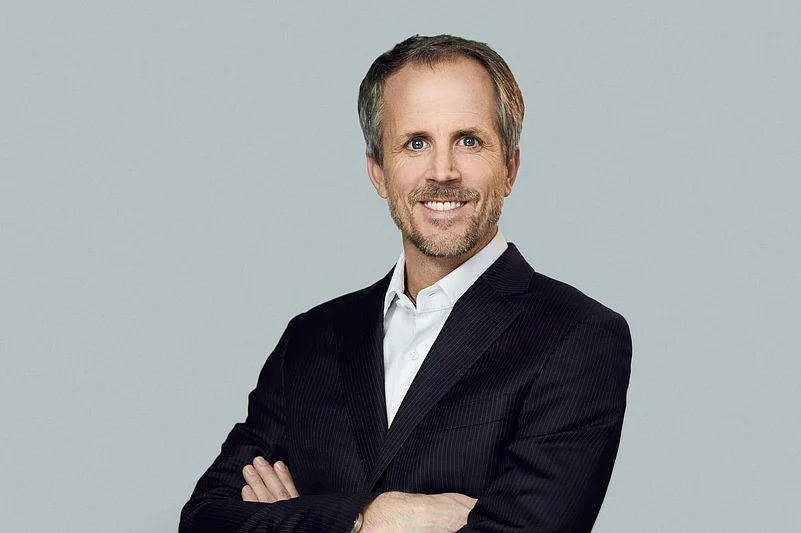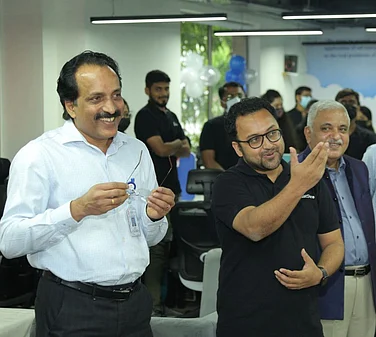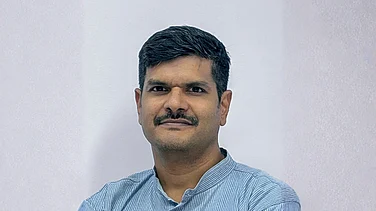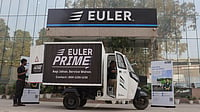Germany-based Sennheiser is known for its high-quality professional audio solutions across the world. Andreas Sennheiser, co-CEO of the company, tells Outlook Business that the demand for its recently launched Profile Wireless microphones was so high that the company could not supply enough for the global market in January, the first month of the product launch. He also talks about the company’s expansion plans in India, the use of AI in audio technology and how the company plans to compete in the highly competitive market in the future. Edited excerpts:
Sennheiser recently launched a creator's focused Profile Wireless microphones in India. Many other electronic brands are also making products that keep content creators in mind. So how do you see India's creators economy and its role in electronics product segment?
We see that the creator business is very strong and also accepting very good technology. So, we always try to innovate from the top down. We have a very strong name in the professional filmmaking and the broadcast industry. And with that same mindset, we also developed the Profile Wireless product, which has been accepted very well. It's an audio multi-tool. In the first month, we couldn't supply enough for the global market and we're ramping up production right now, hoping that we soon fulfill the global demand of that great product. In India also, we sold more than 3,000 units last year. So it's a huge success.
Senheisser products are available at a comparatively higher price point. Any plans to cater to the mass market in India?
While we see that it's price sensitive, we also see that Indian market has a good feeling for the value that they're getting, not just the price they're paying. The versatility, the audio quality and also the build quality of our products are very sustainable. We actually see there's an appreciation also for the value that these products offer. We don't have plans to go much cheaper but we'd rather want to increase the feature richness of our products to create more value.
We see a quite stable fan base in the professional audio recording market and also the podcaster market where the price points of our products are being appreciated.
You don't have any brand outlets in India. How do you reach out to your customers?
A lot of our products are professionally used, either on stage by artists or in a boardroom within the ceiling microphones. These products are purchased with the intent to actually make business. So, they're production tools that artists buy. These are experienced people that are buying our products. Usually, there's consultancy involved. So we only sell online for products that do not need consultancy and that can't go wrong by purchasing it.
But a lot of other parts need integration. They need planning. They need proper handling. While we make them easier and easier to use, they're still part of an ecosystem and not just a singular product like a wireless headphone that you connect to a device.
How are you incorporating AI in your products from a user point of view?
On one hand, AI is helping us to innovate faster because we're getting solutions much quicker, be it in R&D or in producing content. At the same time, it makes our products smart. A ceiling microphone can have speech detection to differentiate between different sounds to determine if it is a coffee machine that's grinding in the background or if it is a person talking so that it can filter out that (noise). These are the solutions that the next iteration of our products will feature. AI is really helping us to create benefits for the end user by making the products smart.
Are you planning to expand your R&D centers in India?
We do have partners in India such as LTIMindtree for software development and others. We are collaborating since more than ten years.
That is an established way of making use of the talent that's here. We do not plan at this point to have an R&D center. On the other hand, we have very experienced people here that do almost like R&D work for our end customers to put together systems for large festivals. That's always a very often a one off design that we support.
The company had plans to expand its India workforce through field engineer, sales and servicing people. How much have you achieved on that front?
(In India) we have seen growth every year with the exception of the COVID year. Last year was also good for growth. We also expect to grow in 2025. With that, the sales force will grow. We will increase the size of the workforce here as the success of the business continues.
We don't target a specific number. We'll just go as we need because sometimes, we're focusing on larger accounts with fewer people. Sometimes we're focusing on more accounts with more people. So it's really depends on who we want to serve.
How do you plan to stay relevant and grow in a very competitive audio equipment market?
One of the keys is to ease user products so that all the complication of the technology gets hidden behind a good user interface. Our latest product Spectera, that is about to launch in a few months, is probably the most complex computing unit that we've ever built. But all of it is operated through a software. There is hardly any button on the product itself.
It's like moving from a push button phone to a smartphone. And with that, we can make the user experience much simpler and easier while the product is much more complex and much more universal and usable.
A versatile platform technology with a very easy user interface will be a strong driver for our success in the future.
The other big trend is immersive audio productions that we see in studio, in film production and in music. A lot of the content producers are now focusing on immersive three-dimensional audio formats because finally people have understood that immersive audio generates a more emotional sound experience.


























